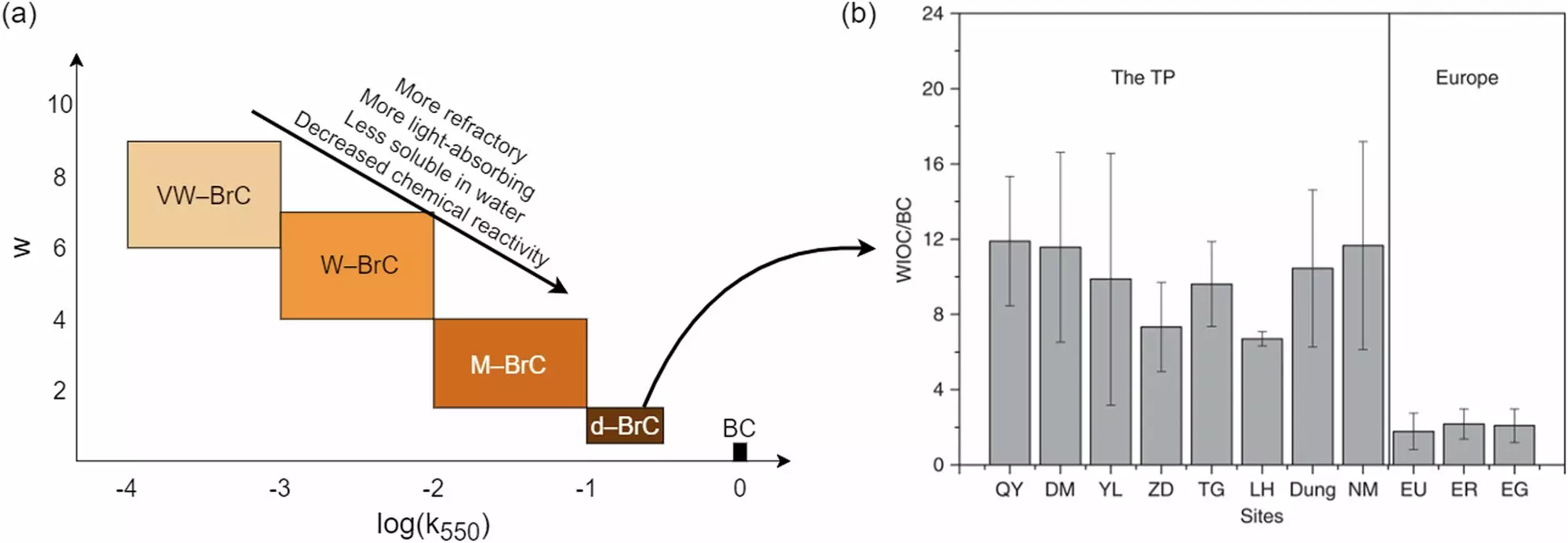Wildfires are known for leaving a trail of destruction in their wake, but a new study sheds light on an overlooked consequence of these natural disasters. While wildfires are often associated with the destruction of forests and homes, the study reveals that the smoke particles they generate can have a significant impact on the melting of snow in snowy regions.
The Role of Dark-Brown Carbon
In the past, the focus has been on the role of black carbon in darkening and decreasing the reflectance of snow. However, the study conducted by researchers at Washington University in St. Louis highlights the importance of dark-brown carbon (d-BrC) in the snow-warming process. According to the study, d-BrC is 1.6 times more potent than black carbon in its ability to warm the atmosphere by absorbing sunlight.
One of the key findings of the study is the underestimated impact of d-BrC on snow melting. While black carbon has been the primary focus of previous research, d-BrC has largely been overlooked. Researchers discovered that d-BrC, like an “evil cousin” of black carbon, is deposited onto snow caps during wildfires, leading to a decrease in reflectivity and an increase in surrounding air temperatures.
The study’s findings have important implications for climate modeling and measurements. Without accounting for the effects of d-BrC, researchers have likely been underestimating the snow melt from wildfire smoke deposition. By including d-BrC in their calculations, scientists can create more accurate climate models and predictions.
Challenges and Future Research
As wildfires continue to increase in frequency and intensity, policymakers will need to find ways to mitigate the impact of d-BrC on snow melt. The research team at Washington University plans to further study the real-world effects of d-BrC by conducting experiments in a controlled laboratory setting. Using a four-foot-tall snow globe, researchers will simulate snow-aerosol interactions to better understand the mechanisms at play.
The study highlights the significant role that wildfire smoke particles, specifically dark-brown carbon, play in the snow melting process. By recognizing the impact of d-BrC and incorporating it into climate models, researchers can improve our understanding of the effects of wildfires on snow-covered regions. This new knowledge will be crucial in developing strategies to mitigate the impact of wildfires on the environment and reduce anomalous snow melt in the future.



Leave a Reply